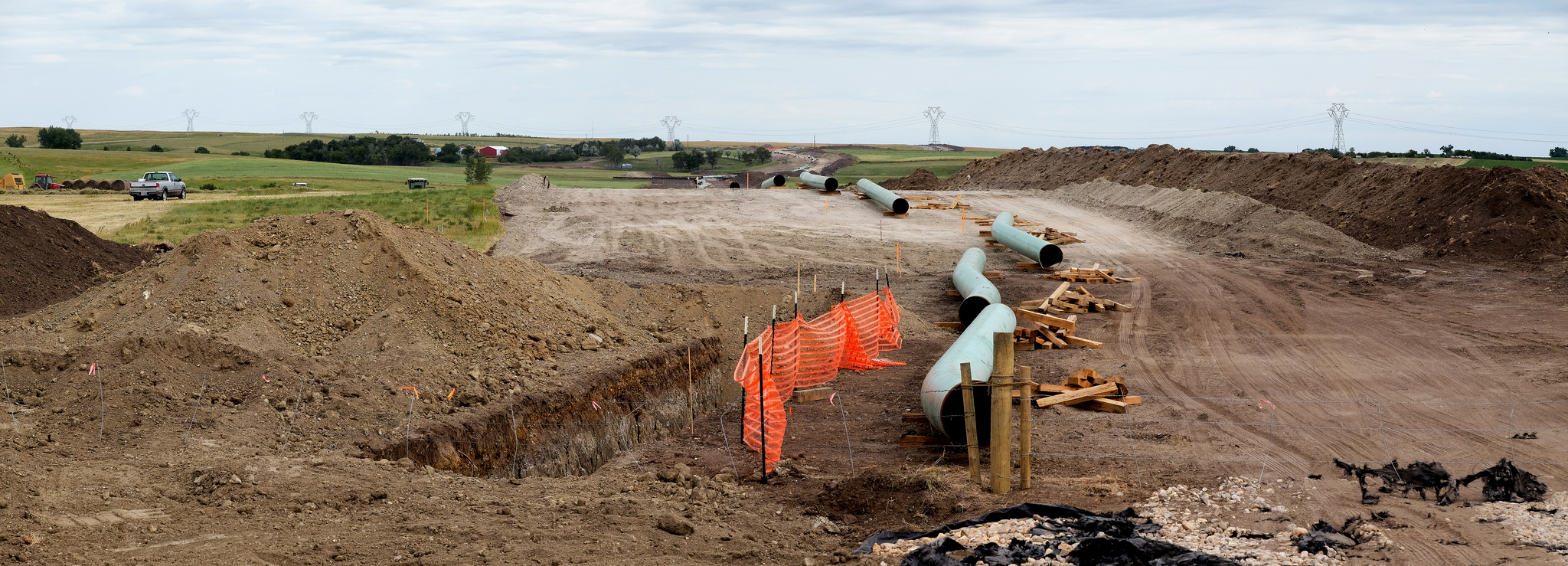Understanding the Dakota Access Pipeline Protests
By on Oct 28 2016

As of Friday, October 28, police have arrested at least 141 people protesting on private land regarding the Dakota Access Pipeline. According to the sheriff's department, protesters were arrested on various charges, including conspiracy to endanger by fire or explosion, engaging in a riot, and maintaining a public nuisance.
Protests have been ongoing for several months, but tension--and action--has escalated as of late, such as the recent standoff between law enforcement and demonstrators who oppose the controversial project.
What is the project?
The Dakota Access Pipeline Project is the $3.8 billion proposal to connect the Bakken and Three Forks production areas in North Dakota to Patoka, Illinois. The 1,172-mile, 30-inch diameter pipeline is being built by a group of companies led by Energy Transfer Partners LP.
Those in favor of the project support the pipeline as a more direct, cost-effective, safer, and environmentally responsible means to transport crude oil from Bakken to major U.S. markets and support domestic demand.
Supporters say that this is both safer and more cost-effective than transporting the oil by either road or by rail.
But not everyone is in favor of the pipeline--most notably the Standing Rock Sioux Tribe.
Project opposition
The Standing Rock Sioux have been fighting the construction of the pipeline for more than a year, and even filed a lawsuit to block the construction. Those who oppose the project, which includes environmental activists, say the pipeline threatens the water supply as well as sacred tribal lands.
Protests began in April. What started as a small camp on the Standing Rock reservation has since grown into an encampment with over 1,000 people. The Sacred Stone Camp (to which it is now referred) has been the center of many face-offs between protesters and the oil company.
From sacredstonecamp.org:
The Dakota Access threatens everything from farming and drinking water to entire ecosystems, wildlife and food sources surrounding the Missouri. The nesting of bald eagles and piping plovers as well as the quality of wild rice and medicinal plants like sweet grass are just a few of the species at stake here.
Further, the Standing Rock Sioux say the pipeline violates treaty land--territory established years ago by the federal government:
We will not allow Dakota Access to trespass on our treaty territory and destroy our medicines and our culture.
Regarding safety, the oil company maintains that —the project is safe-- according to statistics from the U.S. Department of Transportation, pipelines are the safest mode of transporting crude oil. Energy Transfer further ensures that the Dakota Access Pipeline "will be built and operated using the most advanced technology and monitoring systems to make it even safer."
An advocacy group says the tribe's claims are misleading, saying the pipeline "does not cross into the Standing Rock Sioux Tribe's reservation."
A brief overview
Before the project started, the US Army Corps of Engineers evaluated the pre-construction notifications regarding this pipeline project. The National Historic Preservation Act (Section 106) required the Corps to consult with interested tribes on potential impact. The Tribal Historic Preservation Office requests a full archaeological investigation. In December 2015, the Corps publishes an environmental assessment, which states, "the Standing Rock THPO had indicated to DAPL that the Lake Oahu site avoided impacts to tribally significant sites." Despite concerned parties, the the Corps concluds the investigation in April 2016 and finds that no historic properties are affected.
In August, the Standing Rock Sioux file an injunction, suing the Army Corps of Engineers. Eleven days later, Energy Transfer Partners sues the Standing Rock Sioux chairman and tribal members for blocking construction.
September 3: Dakota access bulldozes a path trough land the Standing Rock Sioux claim is sacred tribal burial ground--the tribal lawsuit included contesting permits for this particular area of land.
Three days later, US District Judge James Boasberg agrees to halt a portion of construction on the pipeline.
On September 9, Boasberg denies Standing Rock Sioux Tribe's request to stop work on 4-state Dakota Access Pipeline. Department of Justice, Department of the Army, and Department of the Interior issue a statement asking Energy Transfer Partners to voluntarily cease all construction within 20 miles of the are until it can be determined whether the construction is in violation of the National Environmental Policy Act.
One month later, a federal district court once again refuses to grant an injunction; further, the court dismisses the Standing Rock Sioux's request for permanent stay on construction. Legally, Energy Transfer Partner's have the right to continue building.
Department of Justice, Department of the Army, and Department of the Interior once again issue joint statements refusing to authorize construction permits. They request ETP to cease construction voluntarily. ETP denies request.
Today
While protests have been ongoing, things really came to a head Thursday, October 27, as police in riot gear faced off with protesters on horseback.
As of this morning, construction continues and all protesters have been removed from the location (south of Bismark, North Dakota).
Both sides used aggressive tactics Thursday night into Friday morning. Law enforcement officers used bean bag guns, pepper spray, and high-pitched sirens to disperse the crowd. North Dakota Department of Emergency Services spokeswoman Cecily Fong said protesters lit debris on fire and threw Molotov cocktails.
At the time of this writing, neither Presidential candidate has taken a public position on the issue.
Sources:
Featured image: —Lars Plougmann Flickr
http://www.reuters.com/article/us-usa-pipeline-reg...
http://www.cnn.com/2016/10/28/us/dakota-access-pip...
http://www.motherjones.com/environment/2016/09/dak...






